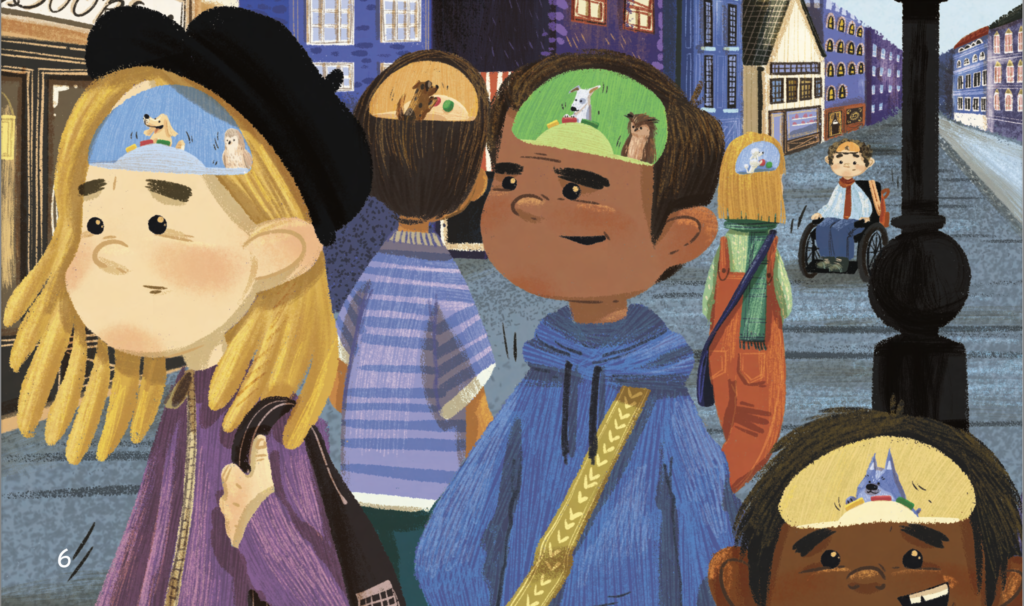Cranium Critters™ help children to understand how different parts of the brain play different roles in keeping us safe and helping us think and make decisions. One important part of the brain is the amygdala, which acts like a safety pup. The amygdala’s job is to protect us from danger by quickly detecting potential threats and sending out alerts to other parts of the brain.
Just like Scout the safety pup, the amygdala is always on the lookout for potential danger. When it senses something that might be a threat, it sends out an alert to the rest of the brain, which helps us react quickly and protect ourselves. This can be helpful in situations where we are actually in danger, such as when we’re being chased by a dog or when we’re crossing the street and a car is coming.
But sometimes Scout can misinterpret a new or uncomfortable situation as dangerous and send out an unnecessary alert. For example, let’s say you’re starting a new school and you’re meeting all kinds of new people. She might send out an alert because she is unfamiliar with these new people and doesn’t know if they’re safe or not. This can make you feel scared or anxious, even if the new people are perfectly nice and friendly.
Another important part of the brain is the prefrontal cortex, which is like Einstein, the wise owl. The prefrontal cortex is responsible for thinking and problem-solving, and it helps us make decisions and plan for the future. It’s the part of the brain that allows us to think and act in a thoughtful and rational way.
But when Scout sends out an alert, it can sometimes scare off or keep us from hearing Einstein and prevent us from doing our best thinking and problem-solving. This can happen when Scout misinterprets a situation as dangerous, even if it’s not. For example, let’s say you’re in a new and unfamiliar situation, like giving a presentation in front of your class for the first time. Even though there’s no real danger, Scout might send out an alert that causes you to feel scared or anxious. This can make it harder for Einstein to do his job and help you think about what to say and make decisions about what to do next.
But there are ways to calm Scout and keep Einstein from taking flight. Here are a few suggestions:
- Take a deep breath: When we’re feeling scared or anxious, our bodies can get tense and our breath can become shallow. Taking a deep breath can help us relax and calm down.
- Find a quiet place: Sometimes it can be helpful to step away from a situation that is making us feel scared or anxious. If you can, find a quiet place where you can calm down and think more clearly.
- Talk to someone: It can be helpful to talk to someone about what you’re feeling. This could be a friend, a family member, or a counselor. Talking to someone can help us feel less alone and can give us a different perspective on the situation.
- Use your senses: Our senses can be powerful tools for calming down. For example, you could try focusing on something you can see, like a picture or a plant. You could also try listening to music or rubbing a soft object. These things can help us feel more relaxed and calm.
In summary, the amygdala (Scout the safety pup) and prefrontal cortex (Einstein the wise owl) are two important parts of the brain that play different roles in keeping us safe and helping us think and make decisions. While Scout’s job is to protect us from danger, sometimes she can misperceive a situation and send out an unnecessary alert. This can scare Einstein, or drown out the sound of his helpful hoots and prevent us from doing our best thinking and problem-solving. But when we use strategies to calm our bodies and minds, Scout Einstein can work well together so that we can stay safe and make good decisions.


